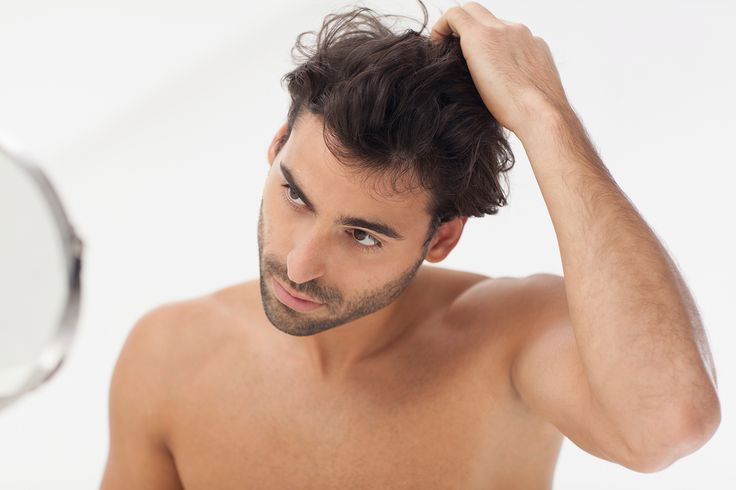Hair Transplant in Dubai for Different Hair Types: What You Need to Know
- acerstone01
- Apr 19
- 5 min read
If you’re considering a hair transplant in Dubai, one of the key factors that will influence your results is your hair type. The good news is that modern hair restoration techniques can be adapted to suit a variety of hair types, from straight and thick to curly or fine hair. Dubai is home to some of the most advanced hair transplant clinics, where cutting-edge technology and skilled surgeons ensure optimal outcomes for patients with diverse hair characteristics.
In this article, we’ll explore how hair transplants are customized to suit different hair types, so you can make the most informed decision before undergoing the procedure.
1. How Does Hair Type Affect the Hair Transplant Process?
Hair type plays a significant role in determining which hair transplant technique is best suited for you. Different hair textures, densities, and growth patterns may influence the method your surgeon uses to ensure the most natural and aesthetically pleasing results. Here’s a breakdown of how hair type can impact the procedure:

Straight and Thick Hair: If you have straight and thick hair, the hair transplant process is often more straightforward. This type of hair provides a denser, fuller appearance, making it easier to achieve a natural-looking result. Surgeons can easily transplant hair follicles without worrying about the hair thinning too much over time.
Curly Hair: Curly hair requires special attention because it behaves differently from straight hair. The curliness can help hide scars and make the hair transplant look fuller. Surgeons need to carefully plan the transplant to ensure that the curl pattern is consistent, resulting in a more natural outcome.
Fine or Thinning Hair: Fine or thinning hair presents more challenges during a transplant. These hair types may not provide the same coverage as thicker hair, so extra care is taken to ensure the follicles are placed strategically for the best possible outcome. Surgeons may recommend FUE (Follicular Unit Extraction) for more precise placement of grafts.
African-American Hair: African-American hair is often more textured and coarse. The key challenge here is making sure the transplanted follicles grow in alignment with the existing hair’s natural curl and thickness. Surgeons will usually choose methods like FUE or even a blend of FUT (Follicular Unit Transplantation) to ensure seamless results.
2. Is FUE or FUT Better for Different Hair Types?
Both FUE and FUT have their advantages, and your surgeon will recommend the method that is most appropriate for your hair type. Let’s take a look at how these two techniques compare for different hair types:
FUE (Follicular Unit Extraction): FUE is the go-to technique for most modern hair transplant surgeries, especially for patients with straight, fine, or curly hair. The procedure is minimally invasive, leaves no visible scars, and has a quicker recovery time. FUE is ideal for individuals with straight and medium to thick hair as it allows for precise extraction and implantation.
FUT (Follicular Unit Transplantation): FUT is typically used for patients with coarse or curly hair, such as African-American patients, because the technique allows for a greater number of follicles to be transplanted at once. This method is also effective for patients with fine or thinning hair, as it can offer a more dense result with a single procedure. However, FUT may leave a linear scar, so it’s better suited for patients who can hide it with longer hair.
Both techniques can yield excellent results, but the decision ultimately depends on the characteristics of your hair and your personal preferences.
3. How Do Surgeons Adapt to Different Hair Types in Dubai?
Dubai is home to top-tier hair transplant clinics where surgeons are well-versed in dealing with all types of hair. The ability to adapt to various hair textures and needs is one of the key advantages of undergoing a hair transplant in Dubai.
Surgeons in Dubai take a personalized approach to each patient’s hair restoration. They begin with a comprehensive consultation, assessing your hair type, density, and overall goals. Based on these factors, they will recommend the best technique and approach for achieving the most natural and aesthetically pleasing result. Additionally, many clinics in Dubai offer state-of-the-art tools such as robotic systems for FUE, which can increase precision and improve outcomes, especially for more challenging hair types.
4. What Is the Recovery Process Like for Different Hair Types?
The recovery process for a hair transplant in Dubai is generally similar across hair types, but there are a few variations to consider:
Straight or Thick Hair: Recovery for straight or thick hair patients is often smooth. As the hair follicles settle into place, there is less risk of hair loss in the recipient area, and the transplanted follicles begin to grow at a relatively faster rate.
Curly Hair: Patients with curly hair may experience a more gradual recovery process. While the hair will begin to grow quickly, it might take longer to fully integrate with the existing hair texture. Curly hair patients may also have less noticeable scarring, as the curls can cover small incisions.
Fine or Thinning Hair: Fine hair patients may experience a slightly longer recovery period, as the follicles take time to establish themselves and grow. Additionally, there might be a greater focus on ensuring the grafts are placed in a way that creates volume, so the hair appears fuller and more natural.
African-American Hair: For African-American hair, recovery typically proceeds similarly to curly hair recovery, though it might take a bit longer for the hair to blend seamlessly with the natural curl pattern. Surgeons take great care to place the follicles in the most effective manner to ensure no visible scarring.
5. Can I Choose the Hairstyle I Want After the Procedure?
One of the most appealing aspects of a hair transplant in Dubai is the flexibility it offers in terms of styling. After your recovery, you’ll be able to style your hair according to your preferences, regardless of your hair type. Whether you have straight, curly, or fine hair, the transplanted follicles will grow in a way that allows you to cut, comb, and style your hair as you see fit.
For patients with curly or coarse hair, it’s important to keep in mind that the curl pattern may need to be preserved to maintain the natural look. However, modern techniques ensure that the result is both natural and stylish, no matter the texture.
6. How Long Does It Take to See Results?
The time frame for seeing results can vary depending on your hair type. On average, most patients will begin to see initial growth around 3 to 6 months after their hair transplant, with fuller results appearing within 12 months. For curly or fine hair, it may take a little longer for the hair to fill in and blend with existing hair, but the outcome is typically worth the wait.
Conclusion
A hair transplant in Dubai can be a transformative procedure for individuals with a wide range of hair types. Whether you have straight, curly, fine, or coarse hair, the advanced techniques and expertise available in Dubai ensure that you’ll receive a personalized treatment plan tailored to your needs. By choosing a reputable clinic and discussing your hair type with a skilled surgeon, you can achieve natural, long-lasting results that restore your confidence and leave you with a full, healthy head of hair.




Comments